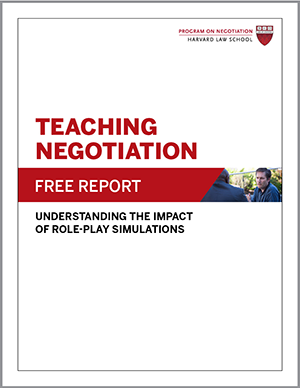
In many organizations, policies and systems perpetuate gender and racial discrimination and inequality, including higher pay for white men as compared to others for the same work. Harvard Kennedy School professor Iris Bohnet, the author of What Works: Gender Equality by Design (Belknap Press, 2016), overviews steps professionals can take to promote wiser, more equitable job negotiations.
How to ensure your job negotiations eliminate as much bias as possible
We have discussed ways in which individuals may be able to improve gender and racial equality in organizations when negotiating their own employment terms. For example, some Hollywood actors and directors are promising to negotiate for “inclusion riders” in their contracts with production companies that guarantee diverse hiring for small parts. To what extent do you think such negotiations and initiatives are useful?
Iris Bohnet: When women fail to negotiate on their own behalf, it’s often because they perceive that doing so is risky—that they may face a backlash for asking for more by behaving contrary to gender stereotypes of women as passive and accommodating. So when other people negotiate on behalf of women and other underrepresented groups in organizations, it can be helpful for everyone.
However, individual negotiations can take us only so far. There is much more that can be done within organizations through “behavioral design”—systemic changes aimed at reducing bias and improving equity. Behavioral design, which Richard Thaler and Cass Sunstein refer to as “choice architecture” in their influential book Nudge: Improving Decisions About Health, Wealth, and Happiness (Penguin, 2009), involves creating decision environments that help us better meet our goals.
What’s one example?
IB: Until recently, women made up only a very small percentage of major U.S. orchestras. Women were auditioning, but decision-makers were biased toward hiring men. This became clear when orchestras started instituting blind auditions where musicians try out behind a screen so that their gender is unknown to those listening. After this change, the percentage of women in the top five U.S. orchestras climbed from 5% to 35%. As this example illustrates, behavioral design bypasses the need to reduce bias in people’s decision-making—bias of which we tend to be unaware and, in fact, often vehemently deny in job negotiations.
In most fields, a completely blind hiring process wouldn’t make sense, but we can at least anonymize the initial screening process. I encourage organizations to institute “electronic curtains” by removing gender- and race-identifying information from electronic job applications before they are first reviewed, including names, pronouns, and head shots.
Eventually, hiring managers will need to interview candidates, and their gender and race will be obvious. How can organizations “debias” hiring interviews?
IB: In part, by requiring decision-makers to conduct structured rather than unstructured interviews. We all like to think we’re a good judge of character, but study after study shows that unstructured interviews are a very poor predictor of on-the-job performance. By contrast, structured interviews allow for far more accurate comparisons across candidates.
To conduct structured job interviews, hiring managers should determine what they are looking for in a candidate in advance. Next, they should write up a checklist of interview questions. The next step is to create a scoring system—for example, a scale of 1 to 10—for each interview question and determine how much weight to assign to each question. During the interview, interviewers should adhere closely to their list of questions, even when it feels awkward to do so. They should score the candidate in the moment, one question at a time, as waiting until after the interview risks allowing faulty memories to bias the process. If multiple people will be conducting interviews, they should meet with the candidate individually rather than as a group. Then, before meeting to discuss the candidate, interviewers should send one another their evaluations in advance, before they are diluted by groupthink.
What would you say to people who might think this sounds like a complicated approach to job negotiations?
IB: Hiring the wrong people creates much more complication. Online tools for conducting structured interviews are available, including Applied from the U.K. Behavioural Insights Team. Most of us put too much faith in our intuition. When we add algorithms and routinized procedures to the hiring process, we reduce the bias in our job negotiations. In doing so, we not only promote equity but also are more likely to hire the best person for the job.
What else do you notice in job negotiations that should be addressed?





